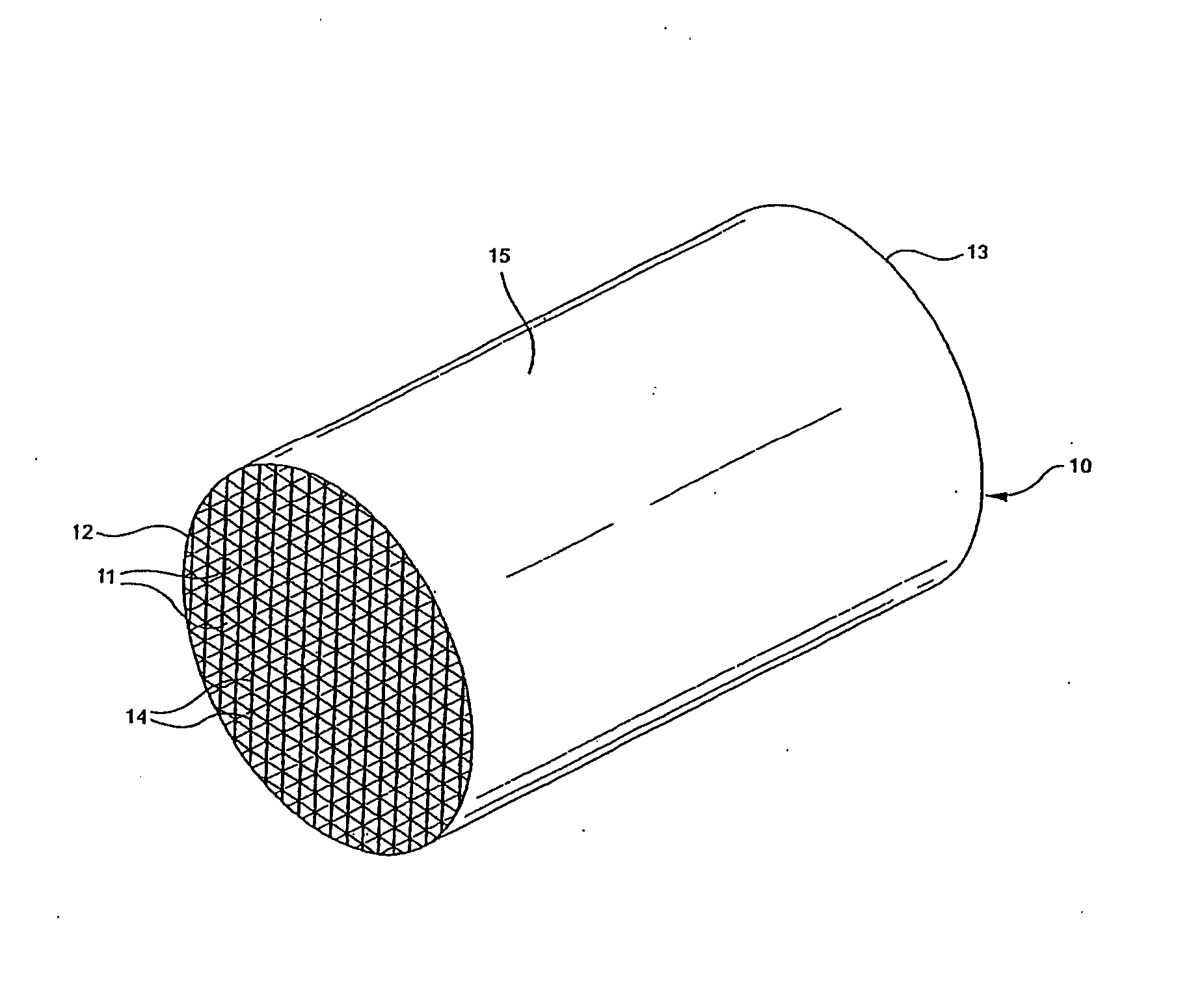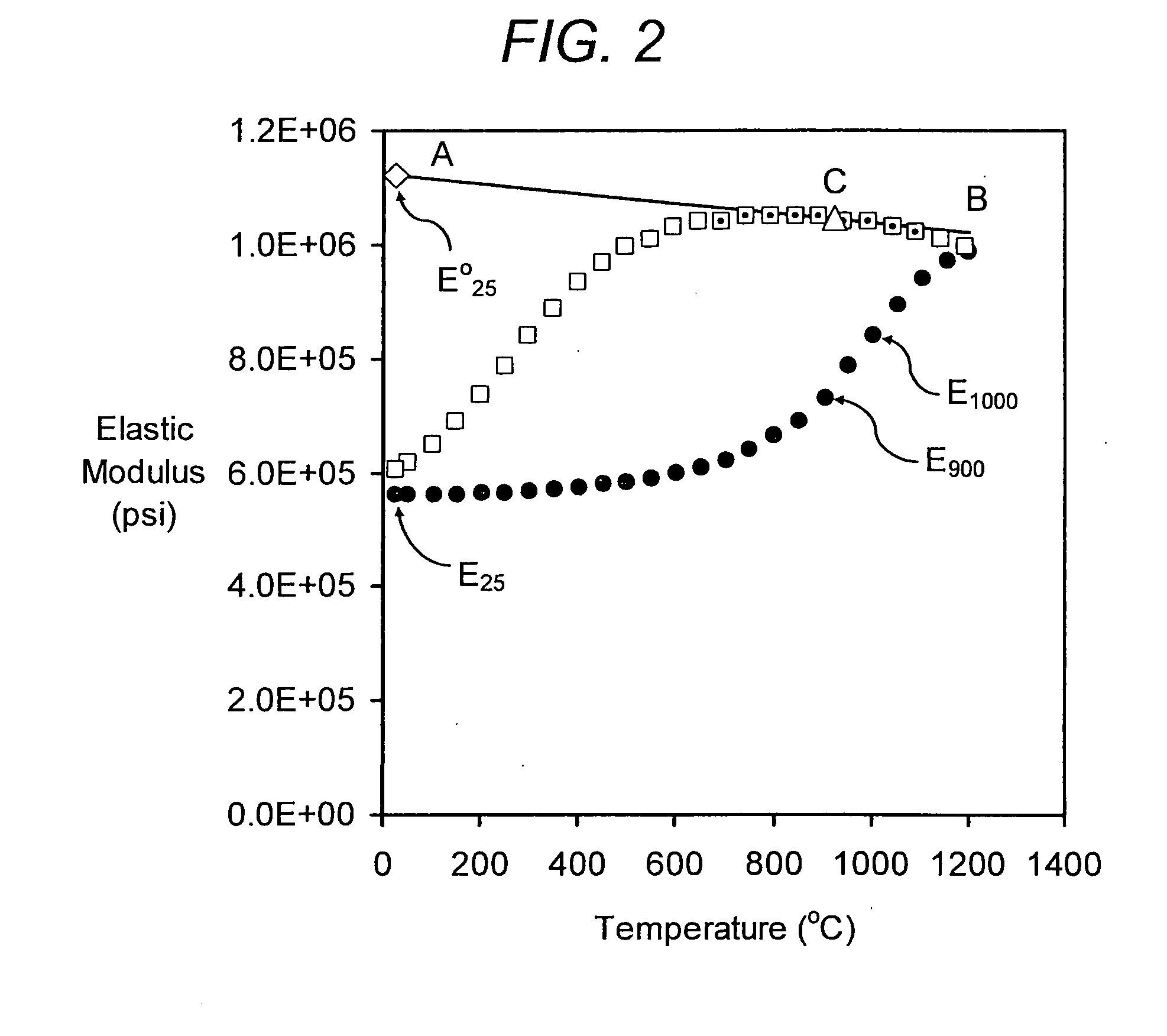Low-microcracked, porous ceramic honeycombs and methods of manufacturing same
- Summary
- Abstract
- Description
- Claims
- Application Information
AI Technical Summary
Benefits of technology
Problems solved by technology
Method used
Image
Examples
Embodiment Construction
[0037] Securing a relatively low ratio of elastic modulus, Eratio 1000=EH 1000° C. / ERT in the cordierite ceramic honeycomb bodies of the invention is achieved by providing bodies formed of a substantially non-microcracked porous, cordierite ceramic material. Eratio 1000 values above 1.00 and below 1.05 are indicative of very minor, but tolerable, levels of microcracking (see FIG. 1), i.e., substantially non-microcracked bodies. Eratio 1000 values above 1.05 are indicative of relatively higher levels of microcracking (FIG. 2) which are less desirable in order to avoid adversely affecting product performance attributes, such as strength and insensitivity of thermal shock resistance to catalyzation. FIG. 1 is a plot of the elastic modulus (psi) versus temperature (° C.) during heating and cooling of an inventive low microcracked cordierite example of the invention (141). Filled circles therein denote heating data, open squares denote cooling data, small filled circles within open squar...
PUM
| Property | Measurement | Unit |
|---|---|---|
| Temperature | aaaaa | aaaaa |
| Temperature | aaaaa | aaaaa |
| Temperature | aaaaa | aaaaa |
Abstract
Description
Claims
Application Information
 Login to View More
Login to View More - R&D
- Intellectual Property
- Life Sciences
- Materials
- Tech Scout
- Unparalleled Data Quality
- Higher Quality Content
- 60% Fewer Hallucinations
Browse by: Latest US Patents, China's latest patents, Technical Efficacy Thesaurus, Application Domain, Technology Topic, Popular Technical Reports.
© 2025 PatSnap. All rights reserved.Legal|Privacy policy|Modern Slavery Act Transparency Statement|Sitemap|About US| Contact US: help@patsnap.com



